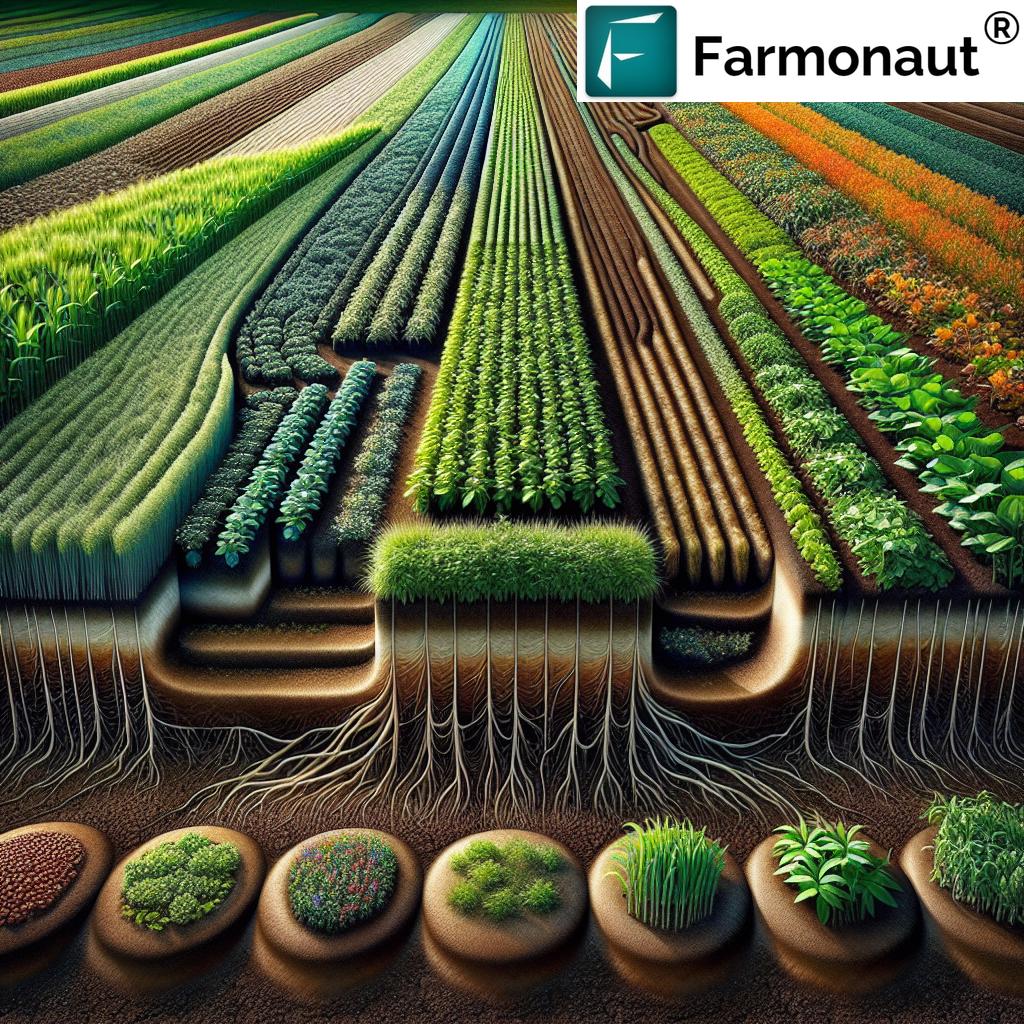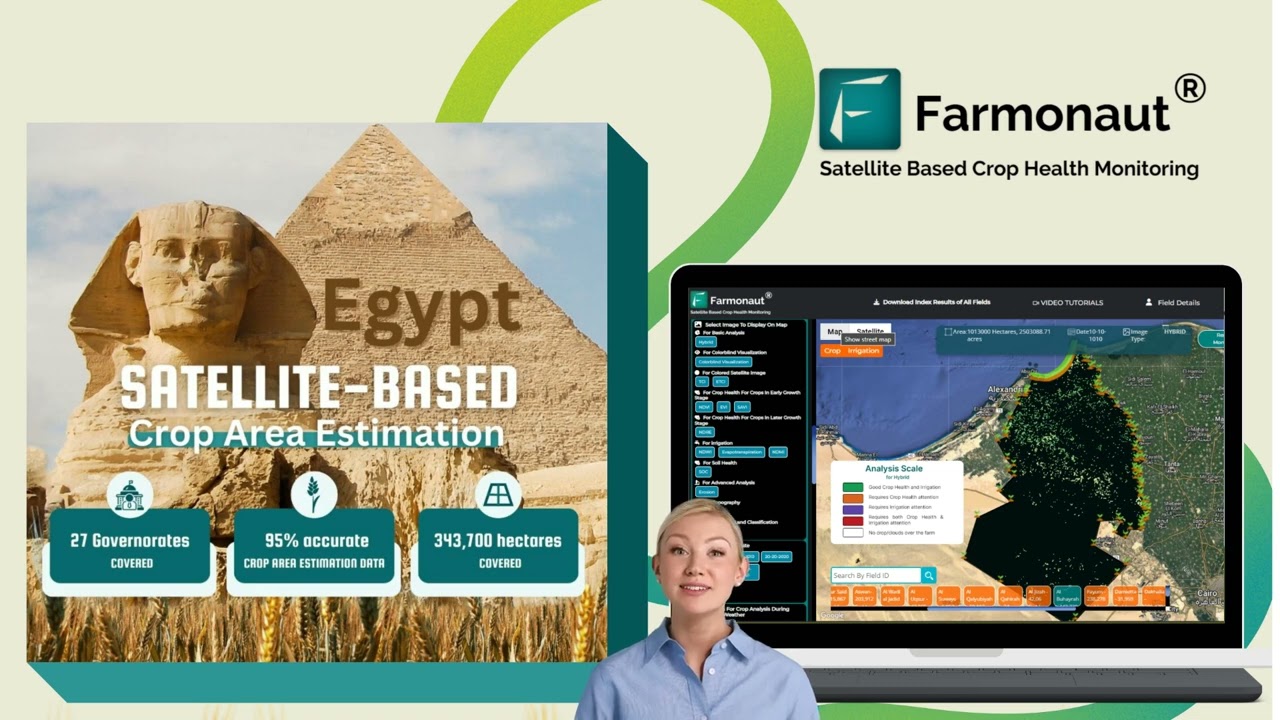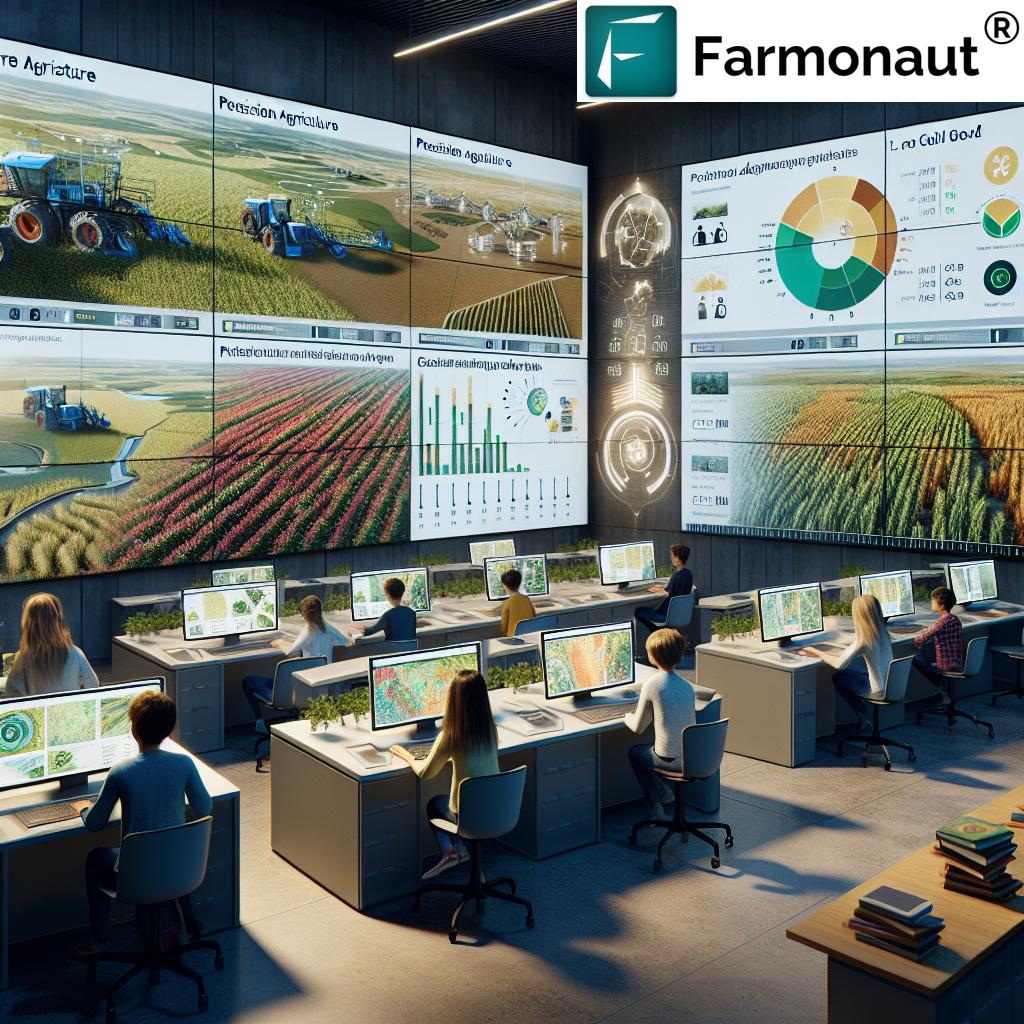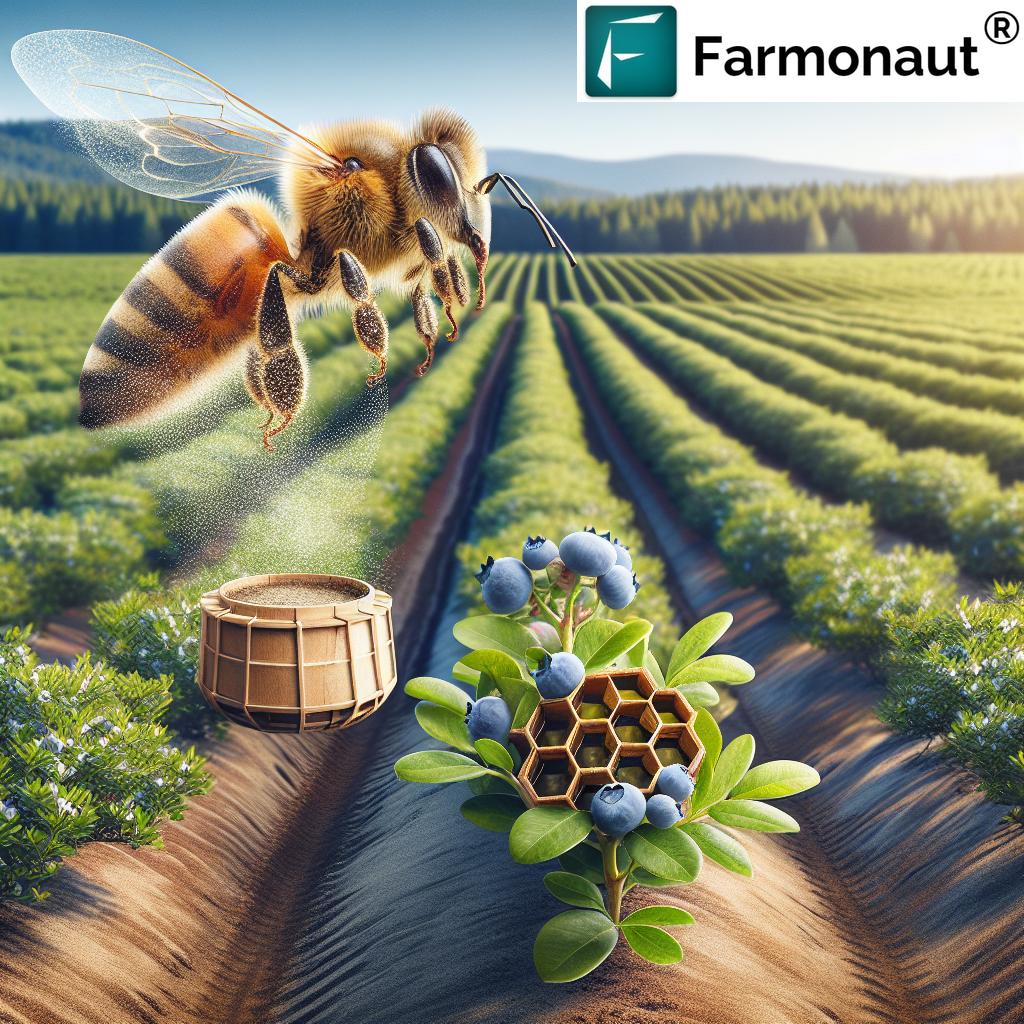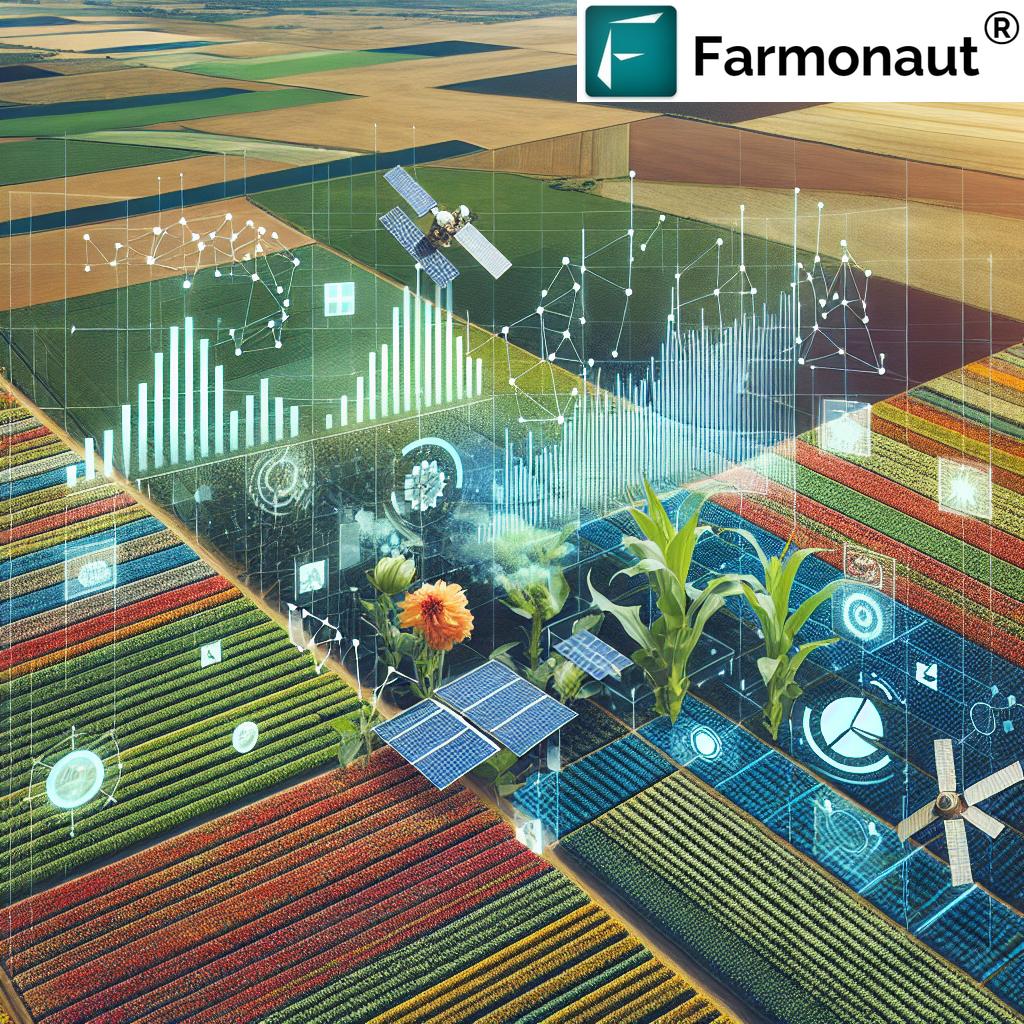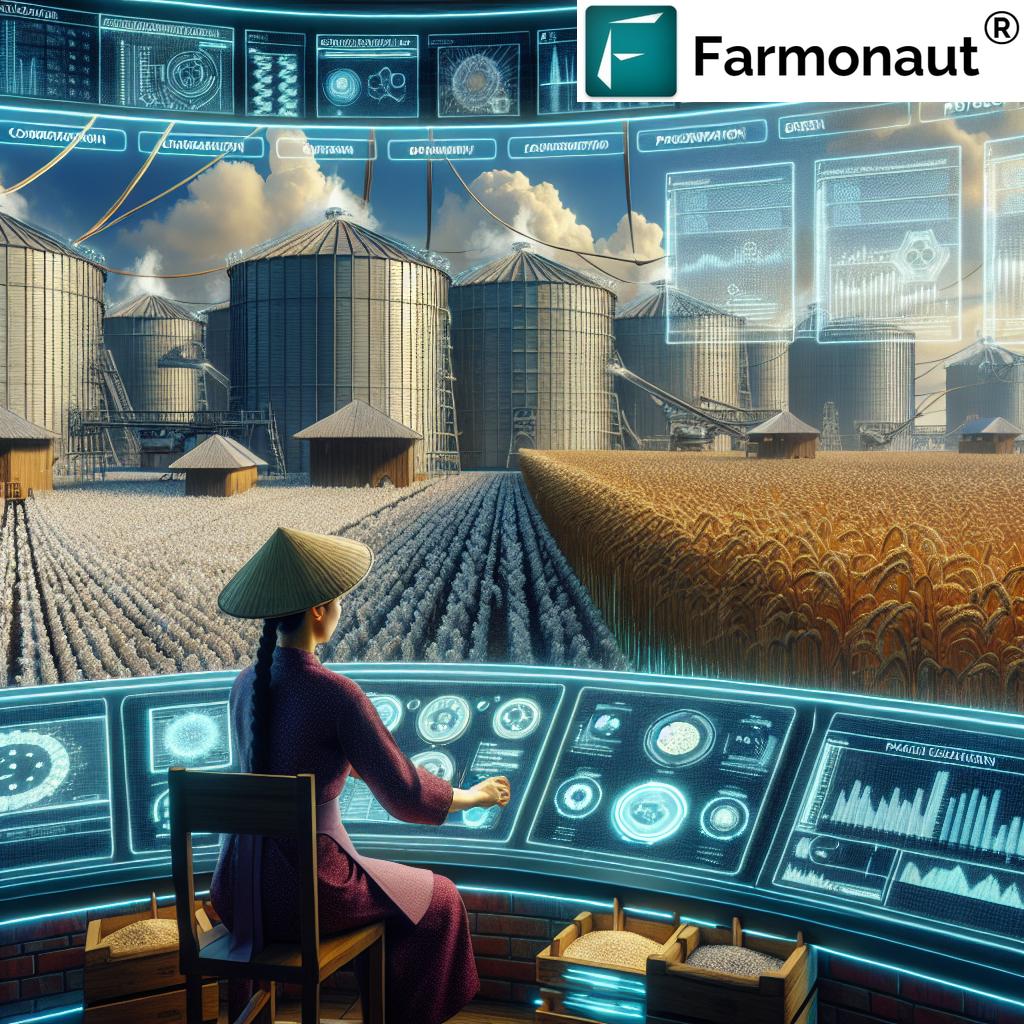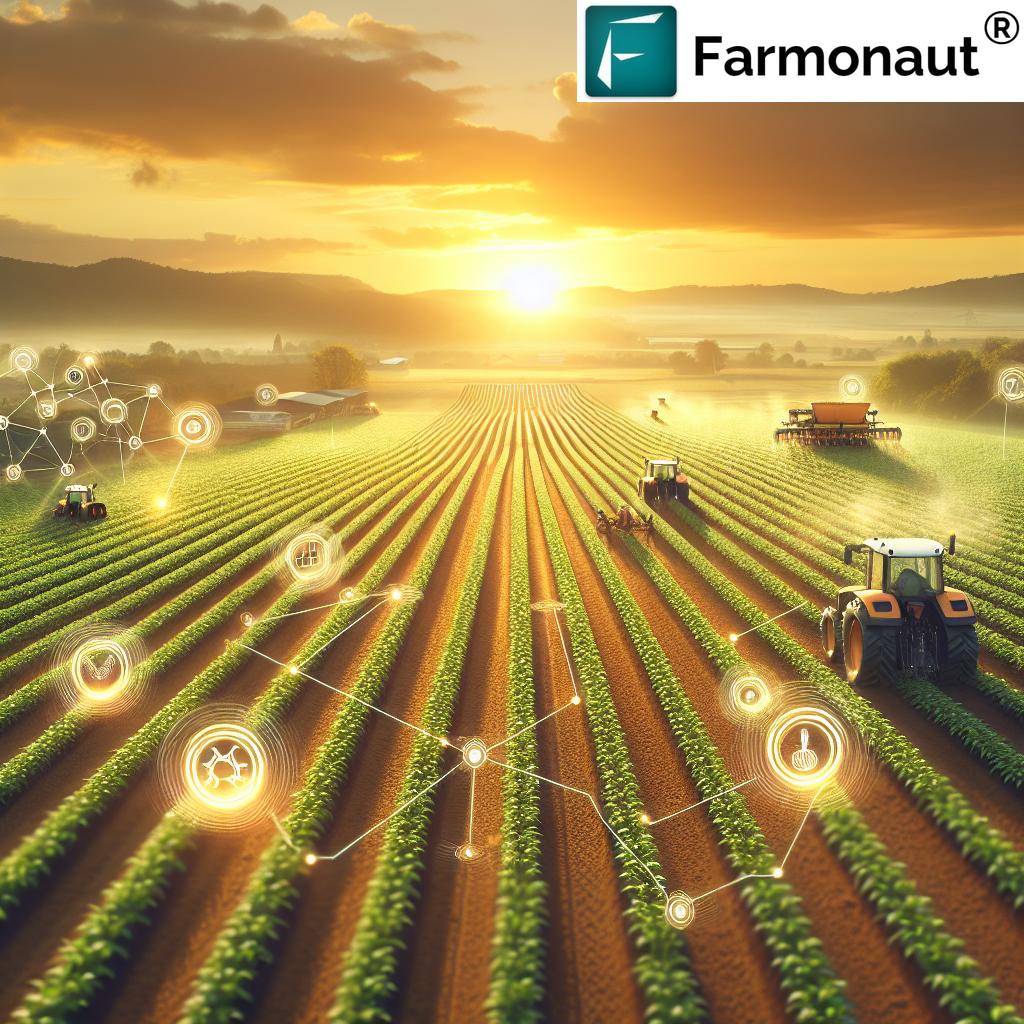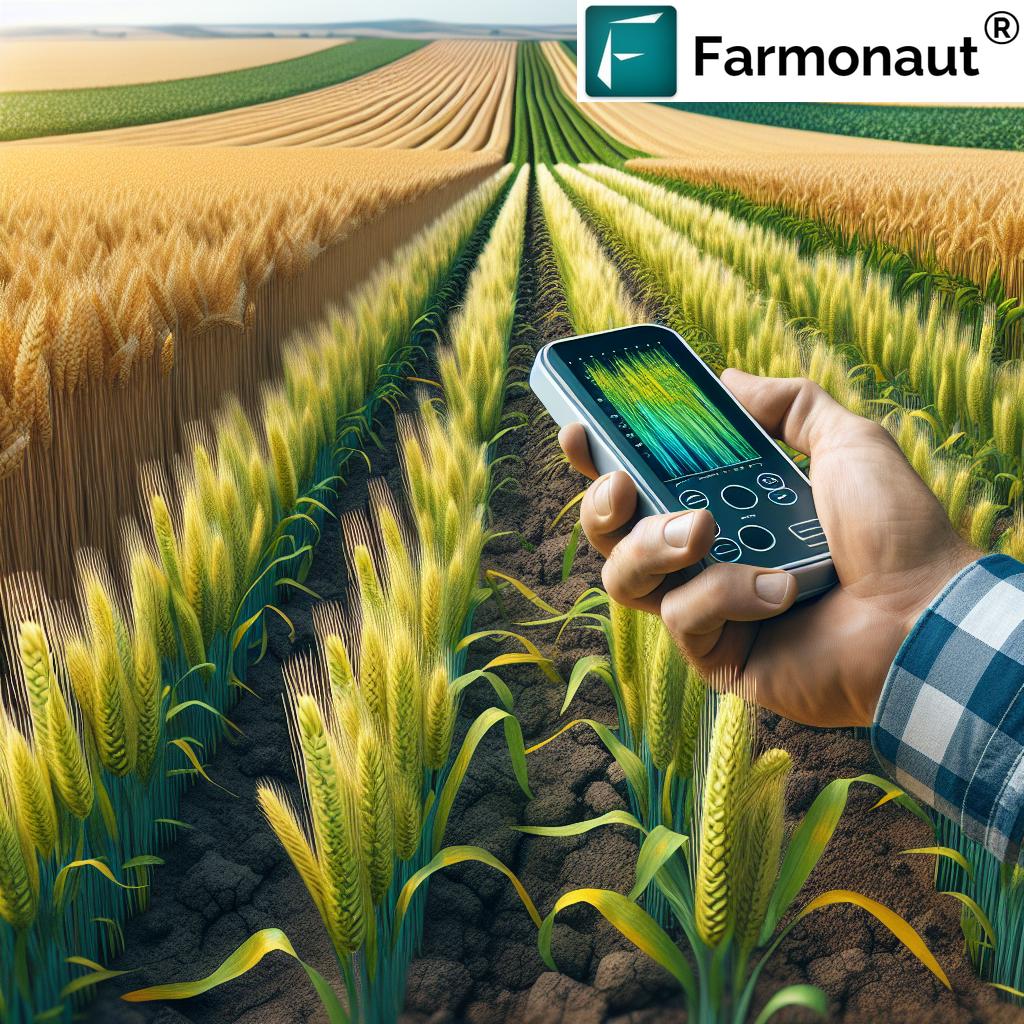Sustainable Agricultural Practices: Boost Yields & Soil Health
“Crop rotation can increase soil organic matter by up to 58%, significantly improving soil health and fertility.”
Sustainable agricultural practices are at the heart of the modern food revolution, combining high yields with the preservation of our planet’s ecological balance. As global food demands rise, it is essential that we protect and restore our soil health, conserve water, and promote natural crop productivity.
Unlike conventional methods that often lead to soil degradation, nutrient depletion, and increased erosion, sustainable practices embrace techniques that maintain and even enhance the life-supporting functions of farmlands. With approaches such as crop rotation, precision seeding, cover cropping, and advanced monitoring tools like Farmonaut, we can achieve robust yields, resilient soils, and environmentally friendly food production systems.
In this comprehensive guide, we will explore the principles, benefits, and step-by-step techniques of sustainable agriculture. From the science behind rotation and seeding to the value of agroforestry, you will discover how to optimize crop and soil health—naturally and effectively—for prosperous harvests year after year.
Key Benefits of Sustainable Agriculture: Protecting Our Soil & Boosting Yields
- Soil Health Restoration: Improves soil structure, increases organic matter, and enhances nutrient availability.
- Enhanced Crop Yields: Encourages natural plant productivity and resilience, enabling farmers to sustainably increase yields.
- Water Conservation: Reduces irrigation needs by improving soil moisture retention and minimizing runoff.
- Pest & Disease Suppression: Limits pest and disease cycles, reducing costly chemical interventions.
- Biodiversity Promotion: Supports diverse microorganisms and wildlife, strengthening agro-ecosystems.
- Climate Resilience: Amplifies resistance to extreme weather and environmental stressors.
- Long-Term Profitability: Reduces input costs, nurtures valuable farmlands, and secures future food production.
Crop Rotation: Enhancing Soil Fertility & Reducing Pests
Crop rotation is among the most fundamental sustainable agricultural practices for improving soil fertility and enhancing crop yields naturally. By rotating different types of crops across a field over successive seasons, we promote a healthier, more balanced agro-ecosystem.
Crop Rotation Benefits
- Nutrient Management: Each crop draws on different soil nutrients. By alternating beans, peas, and other leguminous plants (which fix nitrogen from the air) with other crops, we naturally replenish nutrients.
- Pest and Disease Control: Rotating crops interrupts the life cycles of pests and diseases, discouraging the buildup of crop-specific infestations, and reducing dependency on chemical interventions.
- Soil Structure Improvement: Different root systems (e.g., deep root crops like alfalfa or carrots, followed by shallow rooted cereals) enhance soil aeration, facilitate water infiltration, and help break compacted layers.
- Prevention of Soil Depletion: By mixing plants with high nutrient requirements and those that add organic matter, we prevent soil exhaustion and maintain long-term fertility.
- Mitigation of Erosion: Varying planting patterns protects the field surface, minimizing erosion risks especially on sloping lands.
To maximize the crop rotation benefits, it’s crucial to plan rotations based on soil type, climate, and crop nutrient demands. For example, following cereals with legumes can boost nitrogen content in the soil for subsequent crops.
Modern technologies, such as those offered by Farmonaut, help us map, schedule, and optimize rotation cycles with up-to-date satellite-based crop health monitoring. This ensures ideal nutrient management and precise identification of potential depletion zones.
“Precision seeding can boost crop yields by 10-15% while reducing water usage in sustainable farming systems.”
Precision Seeding: Optimizing Plant Growth for Higher Yields
Precision seeding techniques are transformative in sustainable agricultural practices. By accurately placing seeds at optimal depths and spacings, we can ensure robust germination, uniform plant growth, and maximum resource efficiency.
Key Aspects of Precision Seeding
- Optimal Seed-to-Soil Contact: Close contact between seeds and soil particles ensures uniform moisture absorption and higher germination rates.
- Appropriate Soil Preparation: Establishing a firm, clean seedbed (free from debris and large clumps) provides stability and supports early root development.
- Timely Planting: Assessing soil temperature, moisture, and weather trends allows us to choose the ideal planting windows, maximizing early growth.
Benefits of Precision Seeding Techniques
- Higher Crop Yields: Uniform planting density leads to better light, water, and nutrient access for each plant, preventing competition.
- Reduced Input Costs: Optimizing seed rates minimizes waste, lowering operational costs and resources needed per hectare.
- Efficient Water Usage: With even seed placement and improved moisture usage, water input can fall significantly, supporting conservation agriculture methods.
- Lower Weed Pressure: Precise row spacing can help suppress weeds by providing fewer gaps for weed germination.
- Boosting Germination Rates: Consistent depths and contact reduce failed germinations, increasing total viable plant stand count.
Automated seeding equipment, paired with satellite-derived insights from platforms like Farmonaut, pushes the frontier for sustainable precision seeding. By analyzing field variability and soil moisture, these systems inform us where and when to plant—further optimizing yield and input use.
Conservation Agriculture: A Holistic Approach to Soil & Water Health
Conservation agriculture methods go beyond single practices by blending minimal soil disturbance, permanent organic cover, and species diversification. This integrative approach boosts soil health, improves fertility, optimizes water use, and promotes ecosystem stability.
Core Principles of Conservation Agriculture
- Minimal Soil Disturbance: No-till farming replaces traditional plowing, preserving soil structure and protecting microbial life.
- Maintaining Permanent Soil Cover: Use of cover crops, mulch, and crop residues shields the soil from erosion and moisture loss.
- Crop Diversification: Embracing multiple plant species via rotations, intercropping, or agroforestry supports biodiversity and breaks pest cycles.
By implementing these pillars, we actively protect against both wind and water erosion, minimize weed incursion, and foster higher rates of organic matter buildup in soil layers.
With the help of Farmonaut’s satellite-based monitoring, conservation agriculture becomes predictively manageable. Our insights into soil moisture, vegetation indices, and crop residue coverage help farmers fine-tune every operation—maximizing conservation outcomes without sacrificing yield.
No-Till Farming Advantages: Soil Integrity & Water Retention
No-till farming stands as a key conservation agriculture method, enabling farmers to plant seeds without overturning or breaking up the existing soil structure. This minimizes disturbance and retains natural residues from prior crops.
Soil Erosion Prevention in Farming
- Reduced Erosion: The layer of crop residues left on the surface acts as a natural barrier, significantly preventing both wind and water-driven erosion.
- Enhanced Water Retention: By not disturbing the soil, water is absorbed and retained more efficiently, directly supporting crops during dry spells.
- Increased Soil Organic Matter: With minimal disturbance, decomposing plant matter stays in place, continually enriching soil layers and promoting beneficial microbial activity.
- Resilient Soil Health: Supports soil biodiversity and overall fertility, leading to sustainable yields.
Paired with precision seeding, no-till farming delivers robust, uniform plant establishment while reducing operational energy requirements.
Cover Cropping for Soil Health & Protection
Cover cropping for soil health involves planting non-cash crops like clover, rye, or vetch during off-seasons or between regular crop cycles. Far from being “idle,” these cover crops serve as living shields and nourishments for our soil.
Main Cover Cropping Benefits
- Erosion Control: Robust root systems stabilize soil and prevent topsoil loss from heavy rains or winds.
- Weed Suppression: Quickly-growing cover crops can crowd out weeds—requiring less herbicide and labor for weed control.
- Soil Fertility Enhancement: As cover crops like legumes decompose, they increase soil organic matter and cycle extra nutrients into the soil profile.
- Water Management: Improved soil structure strengthens moisture infiltration and extends water availability for subsequent main crops.
- Support for Soil Microbial Life: More organic matter and root exudates feed beneficial microbes, activating natural processes that help crops thrive.
Using Farmonaut, we can track the effectiveness of cover cropping via satellite-based indices—helping us monitor soil moisture changes, vegetation health, and the return of vital biodiversity in our fields.
Agroforestry for Sustainable Agriculture Systems
Agroforestry is a dynamic concept that integrates trees and shrubs into crop and livestock systems, ultimately blending agricultural and forestry techniques. This multi-layered system delivers benefits far beyond classic monoculture, making it fundamental for sustainability.
Benefits of Agroforestry in Soil Health and Productivity
- Improved Soil Fertility: Tree roots pull up minerals from deeper soil layers and drop leaves, enriching the soil surface with organic matter.
- Erosion Prevention: Strategic planting of trees acts as natural windbreaks and slope stabilizers, protecting soil against water and wind erosion.
- Diversification & Income Security: Adds multiple revenue streams (e.g., timber, fruit, forage) and buffers farmers during difficult seasons.
- Enhanced Water Management: Can help regulate field moisture levels and support neighboring crops in drought and heat stress.
- Biodiversity Support: Provides habitats for birds, pollinators, and natural pest control agents.
Globally, agroforestry for sustainable agriculture is recognized for building resilient food production systems, where soil health, yields, and environmental stability all thrive together.
Integrating Technology: Farmonaut’s Precision in Sustainable Agriculture
As we continually seek new ways to optimize crop yields and promote soil health, advanced technology serves as our most valuable ally. Farmonaut leads this digital transformation, making precision agriculture practical, affordable, and accessible for everyone—from individual farmers to large agribusiness teams.
How Farmonaut Empowers Sustainable Agricultural Practices
- Real-Time Crop Health Monitoring: Using multispectral satellite imagery, Farmonaut provides actionable data on crop development, vegetation health (NDVI), and soil moisture—all key for precise irrigation, fertilizer, and pest management decisions.
- AI-Based Advisory Systems: The Jeevn AI tool analyzes remote sensing data and offers personalized, real-time recommendations for best farming practices—driving smarter crop management across all seasons.
- Blockchain-Based Traceability: Guaranteeing food authenticity and safety, Farmonaut’s system ensures transparent, tamper-proof records for agricultural produce across supply chains.
- Resource/Fleet Management: With Farmonaut, agribusinesses can track machinery movement, reduce operational waste, and allocate resources based on field requirements.
- Environmental Impact Tracking: Farmonaut’s carbon footprinting tools allow us to measure and monitor emissions, take corrective actions, and demonstrate true sustainability in agriculture (Learn more about Carbon Footprinting).
Farmonaut solutions are available via Web, Android, and iOS, ensuring that everyone—from smallholders to commercial growers—can benefit from precision farming data and decision support.
Comparison Table: Sustainable Practices vs. Conventional Methods
Quickly assess the tangible impacts of sustainable agricultural practices compared to traditional approaches. Illustrative and generalized values below highlight estimated improvements in yield, soil organic matter, water usage, and biodiversity.
| Practice | Estimated Yield Increase (%) | Soil Organic Matter Change (%) | Water Usage Reduction (%) | Impact on Biodiversity |
|---|---|---|---|---|
| Crop Rotation | 10–20 | +30 to +58 | 10–15 | High (diversifies soil biota & breaks pest cycles) |
| Precision Seeding | 10–15 | +5 | 10–15 | Moderate (improves crop stand, suppresses weeds) |
| Cover Cropping | 5–10 | +20 to +30 | 15–25 | High (encourages microfauna and pollinators) |
| No-Till Farming | 5–10 | +15 to +30 | 20–30 | High (maintains diverse soil organisms) |
| Agroforestry | 10–25 | +25 to +40 | 15–30 | Very High (multi-layered, supports many species) |
| Conventional Monoculture | Baseline | -5 to -20 | Baseline | Low (encourages pest and disease buildup) |
Farmonaut Subscription Plans
Choose from affordable, scalable packages designed for individual farmers, agribusinesses, and organizations. Enjoy precision satellite crop monitoring, AI advisory, and blockchain for secure, transparent agriculture solutions.
FAQ: Common Questions on Sustainable Agriculture
- Q: What is sustainable agriculture and why is it needed?
Sustainable agriculture is the practice of managing farms for long-term soil, water, and ecosystem health. It is essential for preserving natural resources, increasing yields sustainably, protecting environment, and ensuring food security for future generations. - Q: How does crop rotation contribute to soil health?
Crop rotation prevents nutrient depletion, breaks disease and pest cycles, and improves soil structure by alternating crops with different nutrient needs and root depths.
- Q: Can technology make sustainable practices easier?
Yes! Platforms like Farmonaut use satellite data, AI, and blockchain to help farmers monitor crops, optimize rotations, manage irrigation, prevent crop loss, track carbon footprints, and more.
- Q: What are the key benefits of precision seeding?
It enhances germination rates, ensures uniform plant development, reduces seed waste, improves water and nutrient usage, and ultimately leads to improved yields.
- Q: How can cover crops help reduce input costs?
By protecting soil from erosion, fixing nitrogen, enhancing organic content, and outcompeting weeds, cover crops can cut down fertilizer and herbicide expenses.
- Q: Is sustainable agriculture scalable?
Absolutely. Methods like crop rotation, conservation tillage, and digital farm management can be applied on any scale—from small plots to extensive operations, with tailored technology from Farmonaut supporting both ends.
Conclusion: Building Our Future with Sustainable Agricultural Practices
The journey toward sustainable, resilient, and productive agriculture begins with every seed we plant and every practice we adopt. Approaches like crop rotation and precision seeding are not just best practices—they are essential strategies for improving soil fertility, conserving water, and stabilizing yields across ever-changing climates.
With the integration of digital solutions from Farmonaut, we can harness satellite imagery, AI-powered advisories, and comprehensive resource tracking to make better, more sustainable farming decisions. This enables both smallholder farmers and major enterprise operations to thrive—responsibly and profitably.
Let us continue to promote soil health, conserve natural resources, and ensure a stable food production system for ourselves and the generations to come.


